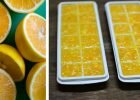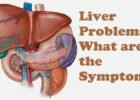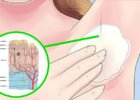Hydrogen peroxide is an inorganic chemical consisted of 2 hydrogen and 2 oxygen atoms. Given the fact that it possesses potent oxidative properties, many people use it as a disinfecting agent. Dissolved hydrogen peroxide destroys viruses, fungi, bacteria, and other germs.
Below you have a list of the top 24 uses of hydrogen peroxide. Check them out!
1. WOUND DISINFECTANT
Medical workers often use hydrogen peroxide to disinfect an open wound on the skin`s surface, such as lacerations and cuts. For this purpose, they use a 3% solution which creates foam when applied onto the wound. If your wound creates foam when coated with hydrogen peroxide, it indicates that there is an ongoing bacterial infection.
2. BATH
Using hydrogen peroxide as an addition to a hot body soak draws out toxins from the skin and body. Simply pour 1 liter of 3% solution into the bath and soak for half an hour.
3. FUNGAL INFECTIONS
Fungal infections usually affect the toenails, as they are always in shoes which creates warm and moist environment in which fungi thrive. Bad odor and skin peeling are the main sings of a fungal infection.
Prepare hydrogen peroxide solution (50:50 ratio) and soak the feet every night before bedtime. Moreover, keep the feet dry in order to prevent the infection from coming back.
4. EAR WAX REMOVAL
Ear wax, also known as cerumen, often builds up in the external auditory canal. The chances are that it obstructs the pathway of sound to the tympanic membrane over time. The most common treatment involves a water jet propulsion device which basically removes the accumulated wax from the ear.
You can also use hydrogen peroxide for this purpose! Get a 3% solution and pour a few drops into the ear canal. The ear wax will start dissolving after as you feel a crackling sensation.
Hydrogen peroxide can be also used for whitening your teeth and hair, treating enema, and even cleaning contact lenses.
5. MOUTHWASH
Hydrogen peroxide is both economical and effective mouthwash. Put a capful of 3% solution in your mouth and hold for about 10 minutes before spitting it out. This trick will whiten your teeth and even help you eliminate nasty canker sores, if any.
6. TOOTHPASTE
Mix 3% hydrogen peroxide with some baking soda to create natural and effective toothpaste!
7. TOOTHBRUSH
If you are not interested in making your own toothpaste, simply soak the toothbrush in 3% hydrogen peroxide and brush the teeth as usual. This trick keeps the toothbrush free of germs.
8. TOOTHACHE
Hydrogen peroxide can be very helpful in case of a toothache, due to its strong antibacterial, anti-fungal, and anti-viral properties. However, it is not a painkiller. It has the ability to kill off pathogens which cause the infection in the first place. In case your dentist tells you to get a root canal due to an inflamed tooth, don’t give up. In such case, it is recommended to rinse the oral cavity with hydrogen peroxide and coconut oil a few times daily until the discomfort subsides.
If you are experiencing a severe toothache, pour a 3% hydrogen peroxide in your mouth and hold for about 10 minutes. Repeat the procedure until the pain disappears.
9. TEETH WHITENING AGENT
Regular use of 3% hydrogen peroxide will naturally whiten your teeth in a matter of weeks. Just get a bottle of 3% hydrogen peroxide and forget about the expensive visits to the dentist.
10. DOUCHE
Mix 2 cupfuls of 3% solution with some warm distilled water and treat your yeast infection with this solution. Most people are recommended to repeat the treatment two times on a weekly basis.
11. COLONIC OR ENEMA
For the purpose of using hydrogen peroxide as a colonic, add 8 ounces of it into 5 gallons of warm water. If you are using it for enema, add a tablespoon of it into a quart of warm distilled water.
12. HAIR LIGHTENING
Make a 50:50 solution of hydrogen peroxide and spray your hair with it to lighten your hair and give it a volume boost. It is recommended to do this on wet hair, preferably right after taking a shower. Note that this treatment doesn’t work overnight and it takes some time to give you the natural highlights you are wishing for.
13. CONTACT LENSES
Did you know that hydrogen peroxide acts as a disinfectant in the CIBA Vision`s Care no-rub cleaning solution for contact lenses? It actually breaks down the protein build-ups on the lenses, which are the way your eyes respond to a foreign organism.
14. DISHWASHER
To disinfect your dishwasher, add 2 ounces of 3% hydrogen peroxide to the regular washing products.
15. KITCHEN/ HOUSEHOLD SURFACES
Hydrogen peroxide kills off bacteria on your kitchen counter while leaving a fresh smell behind. Make a 50:50 solution of 3% hydrogen peroxide and keep it handy. After cleaning the wooden cutting board, spray the surface with the solution to kill off salmonella or other microbes. Ultimately, spray some vinegar over.
You can use this solution for cleaning the glass, mirrors, toilet, floors, counters, and other surfaces which need disinfection.
Extra Tip: Never mix vinegar and hydrogen peroxide and use two separate bottles for each of them, respectively. When cleaning a surface, regardless of whether it is a cutting board, counter, sink, toilet, floor, or toy, use the hydrogen peroxide and then the vinegar. The combination of these two causes a chemical reaction, creating a powerful sanitizer.
16. HUMIDIFIERS/ STEAMERS
Add some 3% hydrogen peroxide to a gallon of water and pour the solution into the humidifier/ steamer.
17. WASHING AND LAUNDRY
To whiten your white clothes, add a cup of hydrogen peroxide to them instead of regular bleach. Apply it onto a dirty spot if there is any. Let it work for a minute, rub very well, and then wash with cool water.
Hydrogen peroxide is an amazing solution as it keeps the clothes white naturally! Unlike chlorinate clothes which wear out fast, this is not the case with hydrogen peroxide.
18. LAUNDRY AND STAIN REMOVAL
This solution can effectively remove stains, including 2-day old blood stains! Put some of it on the stain and let it bubble. Wait for a while and then remove both the solution and stain with a paper towel.
You should put peroxide onto the blood stain before using warm water. Use cold water and cleanser to remove peroxide-treated stains in the next phase. Note that it works as a strong bleaching agent, which means that it may discolor fabrics.
19. PREPARATION OF FOOD / DECONTAMINATION
Both hydrogen peroxide and vinegar are inexpensive and non-toxic disinfectants which destroy pathogens. Given the fact that peroxide is non-toxic, it can be used for prep-cooking and cooking. According to an experiment done by experts at Virginia Polytechnic Institute and State University, the combination of hydrogen peroxide and vinegar destroyed salmonella, E. Coli, and Shigella on contaminated food.
20. VEGGIE SOAK
Soaking vegetables in hydrogen peroxide kills off microorganisms and neutralizes detrimental chemicals. Add a quarter container of hydrogen peroxide into a sink filled with water and soak the veggies, depending on their type. If they are light skinned, like lettuce, 20 minutes is enough. However, cucumbers and other thicker skinned veggies may take half an hour. In case you are pressed for time, skip the soaking and just spray the veggies with the solution, leaving it on for a few minutes before washing it off.
21. SPROUTING SEEDS
Add 1 oz. of 3% hydrogen peroxide in some water and soak the seeds during the night. Use the same amount of peroxide every time you wash the seeds.
22. MARINADES
Put your fish, poultry, beef or pork in a casserole. Mix equal parts of peroxide and water and pour the mixture over the meat. Keep it refrigerated for 30 minutes, rinse well, and continue with the cooking.
23. MEAT SANITIZING
To sanitize meat, rinse it off with hydrogen peroxide prior to cooking it.
24. LEFTOVER TOSSED SALAD
Mix a tablespoon of 3% hydrogen peroxide with half a cup of water, drain, cover and keep the salad refrigerated.




